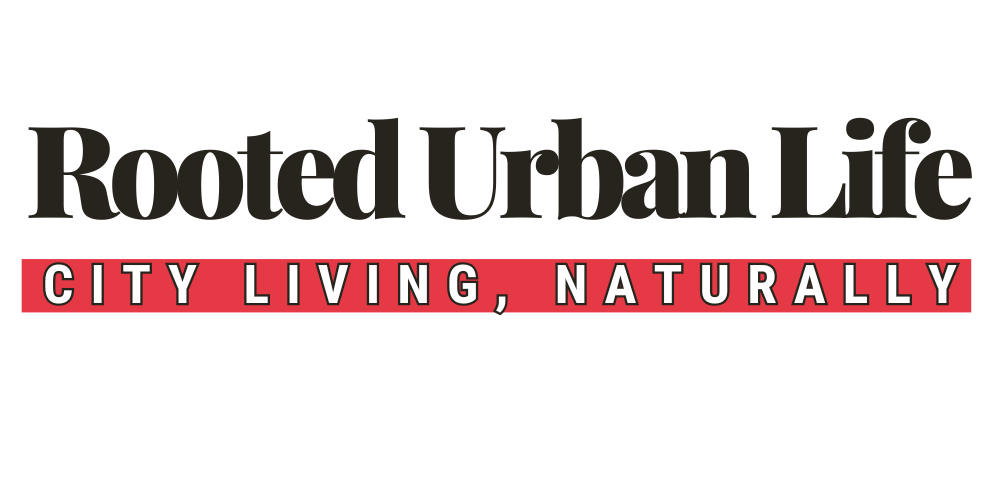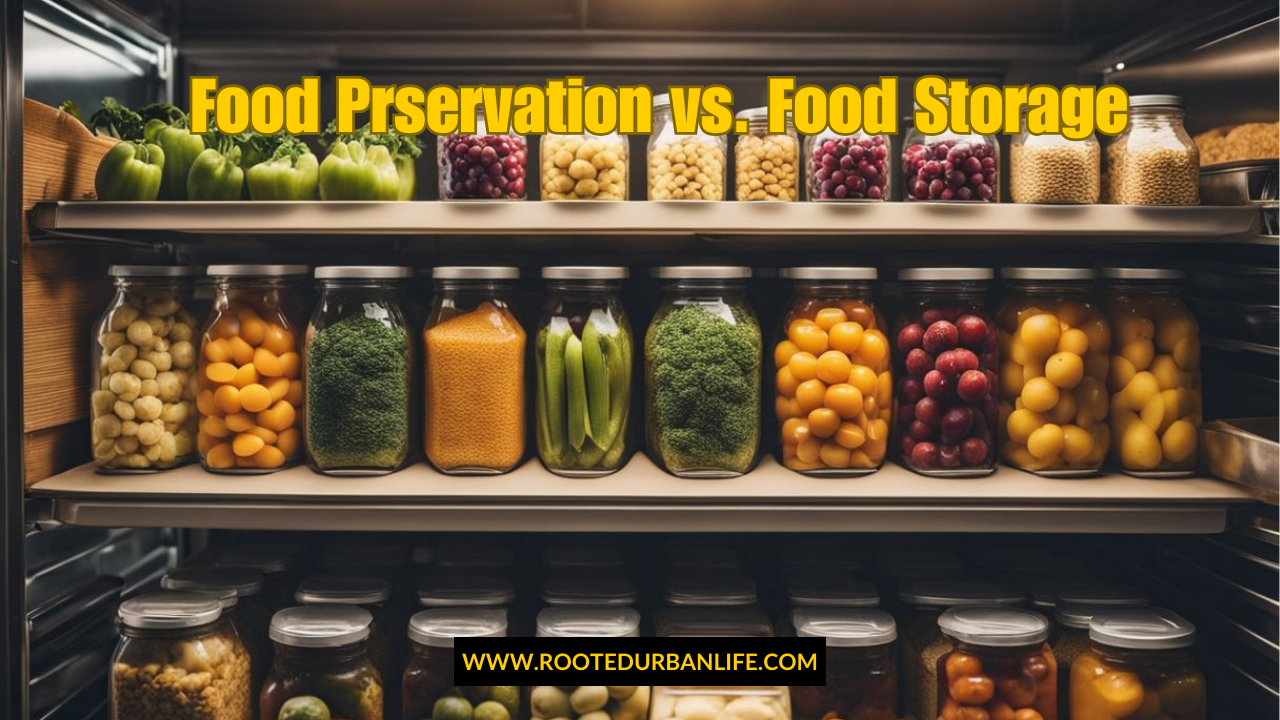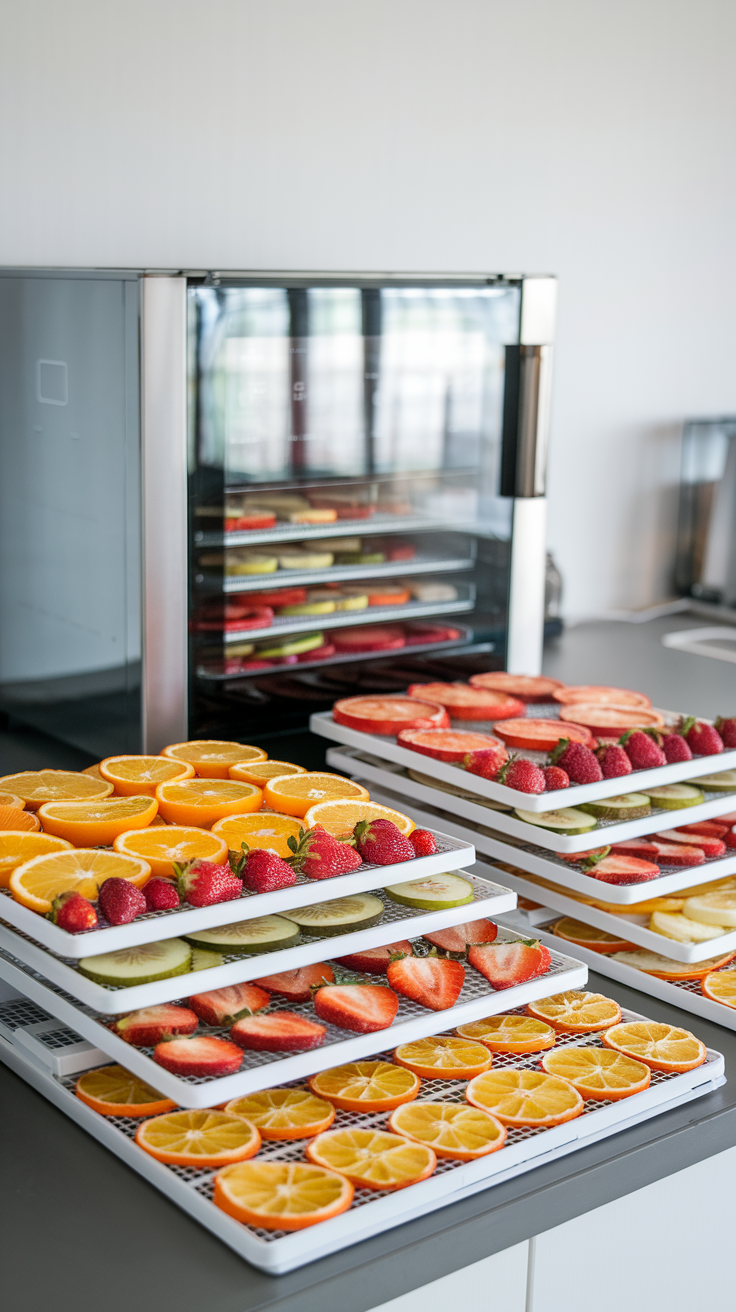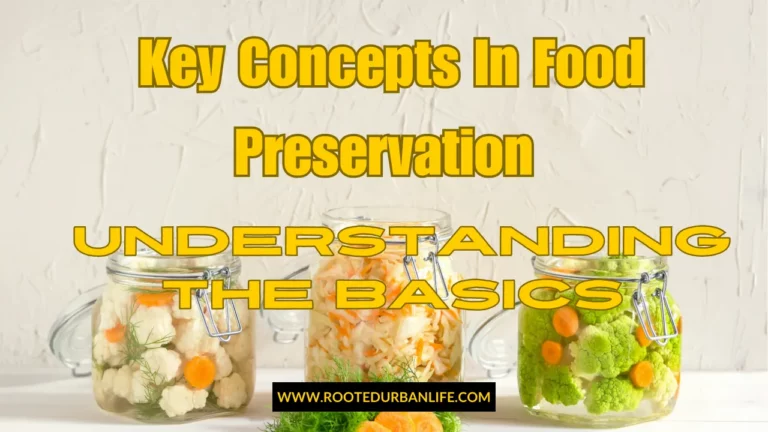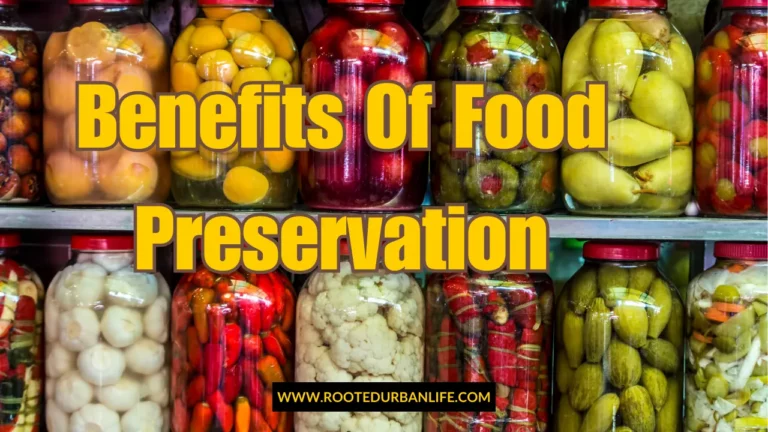Food Preservation vs. Food Storage: Understanding Key Differences and Best Practices
Food preservation and food storage play crucial roles in keeping food safe and fresh.
The main difference is that food preservation involves techniques that extend the life and quality of food, while food storage focuses on keeping that food in a suitable environment until it is used.
Understanding both methods helps individuals minimize spoilage and ensure food safety, which is especially important in today’s world where food waste is a significant concern.
Read more: Food Preservation vs. Food Storage: Understanding Key Differences and Best Practices| The beginner friendly guide explores the important differences between food preservation and food storage. It explains that food preservation involves various methods to extend the life of food, such as canning, drying, and freezing, so you can enjoy it long after it’s been harvested. On the other hand, food storage is about keeping food in ideal conditions, like storing in a pantry or refrigerator, to maintain its freshness until you’re ready to use it. By following the suggestions in this guide, you will know when and why to use each method and will be better equipped to make the most out of your food and reduce waste. |
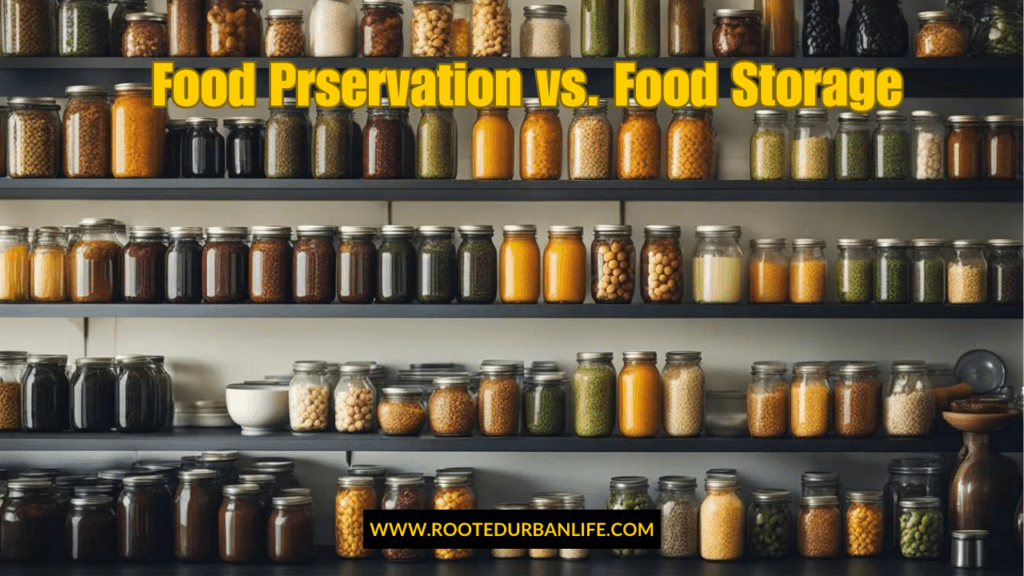
Food Preservation vs. Food Storage: What Are The Differences
Food preservation includes various methods such as canning, freezing, and drying, all aimed at maintaining a food’s integrity for longer periods.
In contrast, food storage addresses how and where to keep these items to ensure they remain in good condition.
By knowing which practices to use, you can enhance your food supply and reduce waste at home.
With a solid grasp of these concepts, readers can choose the best methods to protect their food. This knowledge not only helps in maintaining quality but also promotes safe eating habits.
Understanding Food Preservation
Food preservation is essential for extending the shelf life of food and maintaining its quality. Different methods can be used, each impacting aspects like taste, texture, and nutritional value.
The effectiveness of these methods often depends on controlling factors like temperature, moisture, and oxygen levels.
Fundamentals of Food Preservation
Food preservation aims to inhibit the growth of microorganisms and prevent spoilage. This is achieved primarily by reducing water activity, manipulating pH, and limiting oxygen exposure.
Microorganisms, including bacteria, yeasts, and molds, are the main causes of food spoilage. Effective preservation techniques create an environment that is unfavorable for these organisms. Most methods alter the food in a way that slows down or halts the processes that make food go bad.
Understanding the fundamentals helps in choosing the right preservation method. This knowledge also supports efforts to maintain food quality in terms of flavor, texture, and nutritional content.
Methods of Food Preservation
Various methods are employed in food preservation. Below are some of the most common techniques used:
- Canning: This method encloses food in jars or cans and heats them to kill bacteria. It is effective for fruits and vegetables.
- Freezing: By lowering temperatures, freezing slows down microbial growth. It preserves food quality and freshness over longer periods.
- Drying: This technique removes moisture from food. Options include air drying and dehydrators, helping to prevent spoilage.
- Pickling: Food is submerged in acidic solutions, often vinegar, which creates an environment that inhibits bacteria.
- Fermentation: Beneficial bacteria are encouraged to grow, which helps preserve food while adding unique flavors.
- Smoking: This process uses smoke to dry and flavor foods, helping to inhibit spoilage.
- Salting: Salt draws moisture out of food and creates an environment that is hostile to bacteria.
Each method has unique benefits and limitations regarding the foods they work best with.
Effects of Preservation on Food Quality
Preservation strongly affects food quality. Methods like freezing generally maintain taste and texture better than drying. For example, frozen vegetables often retain their crispness.
However, certain techniques may alter food in ways that some may find undesirable. For instance, canning can sometimes soften fruits and vegetables.
The nutritional value can also be affected. While freezing preserves most nutrients well, drying can lead to some losses. The method chosen should balance desired shelf life with the quality of the preserved food.
Scientific Principles Behind Preservation
Food preservation relies on specific scientific principles. Temperature control is critical. For example, freezing slows down enzyme activity and stops the growth of harmful microorganisms.
Moisture is another vital factor. Reducing water content through methods like drying or salting inhibits spoilage. Additionally, altering the pH can create an acidic environment that prevents bacterial growth.
Lastly, oxygen plays a role in preserving food. Techniques like vacuum sealing help limit oxygen exposure. This creates an unfavorable environment for spoilage and helps maintain food quality. Understanding these principles is key to effective food preservation.
Understanding Food Storage
Food storage is essential for keeping food safe and fresh. The right techniques can help prevent spoilage and extend shelf life. This section covers key principles, solutions, and methods for effective food storage.
Principles of Food Storage
Effective food storage relies on several principles. Temperature control is crucial. Perishable foods, like dairy and meat, need refrigeration to slow bacterial growth. Non-perishable items, such as canned goods, can be stored at room temperature, while semi-perishable items, like certain fruits and some grains, require cool, dry conditions.
Moisture plays a significant role, too. Too much moisture can lead to spoilage and mold, while too little can cause food to dry out. Maintaining the right moisture level is essential for quality. Finally, oxygen is a key factor. Exposure to oxygen can lead to oxidation, resulting in off-flavors and spoilage.
Food Storage Solutions
There are various methods for food storage, each suitable for different types of food. Refrigeration is vital for perishable items, ensuring they stay fresh longer. Freezing can also preserve food, extending its shelf life months or even years.
For non-perishable goods, root cellaring is an effective method. This involves storing produce in a cool, dark, and humid environment. For long-term storage, vacuum packaging keeps air out and prevents spoilage. Mylar bags combined with oxygen absorbers can be effective for grains and dried foods, ensuring they remain fresh.
Managing Food Shelf Life
Understanding food shelf life helps consumers know how long food remains safe to eat. Each food category has different shelf lives. Perishable foods usually last only days or weeks, while semi-perishable foods can last several months.
Tracking the shelf life of items is important. Keeping foods organized and labeled with expiration dates helps prevent eating spoiled food. It is also wise to use older items first. This practice, known as first in, first out (FIFO), helps manage inventory effectively.
The Role of Packaging in Storage
Packaging is crucial for food storage. Proper packaging keeps food fresh and safe from contamination. Vacuum sealing removes air, reducing spoilage due to oxygen exposure. Meanwhile, Mylar bags provide a barrier to moisture and light.
Using packaging with built-in oxygen absorbers can further enhance preservation. These absorbers help prevent oxidation, keeping food quality intact. Good packaging not only extends shelf life but also helps maintain flavor and texture, allowing consumers to enjoy food at its best.
Comparing Preservation and Storage
Food preservation and food storage serve different roles in keeping food safe and extending its lifespan. Understanding their distinctions can help make informed choices about how to manage food at home.
Differences in Techniques and Outcomes
Food preservation methods aim to protect food’s nutritional value and quality for an extended period. Techniques include canning, freezing, and dehydrating. These methods often require more time and skill.
In contrast, food storage simply involves keeping food in a safe environment, like a refrigerator or pantry. Refrigeration is common for perishable items, while cupboard storage works well for dry goods.
The outcome of preservation is often longer shelf life and reduced food waste. Preservation can maintain the food’s nutrients while preventing spoilage. For example, canned vegetables retain much of their original nutritional value, making them a good choice for long-term use.
Making the Choice: Storage or Preservation
Choosing between food preservation and storage depends on individual needs. For quick access to food, storage might be better, especially for perishable items that will be used soon.
On the other hand, to minimize food waste and improve cost-effectiveness, preservation offers advantages. Using preservation methods can extend the shelf life of seasons’ produce, allowing for year-round enjoyment.
For someone looking to maintain a variety of foods for longer, learning some preservation techniques can be worthwhile. The selection between these methods depends on the desired outcomes, available resources, and personal preferences.
Safety Considerations in Preservation and Storage
Safety is crucial in both food preservation and storage. Proper practices help prevent foodborne illness and ensure that preserved foods remain safe to eat.
Preventing Foodborne Illness
Foodborne illness often comes from microorganisms like bacteria, yeasts, and molds. To minimize risks, it is important to follow safe food handling practices.
- Clean: Always wash hands and surfaces before, during, and after food preparation.
- Cook: Use proper temperatures to cook foods, particularly when canning. The USDA recommends specific temperatures for different foods to kill harmful bacteria.
- Chill: Refrigerate perishable items promptly to slow down the growth of microorganisms.
- Check: Look for signs of spoilage before consuming any preserved food.
Incorrect storage conditions can lead to dangerous bacteria growth, especially in canned goods. Regularly checking storage temperatures is vital for safety.
Handling and Consuming Preserved Foods Safely
Handling preserved foods requires care to avoid contamination. When canning or using methods like water bath canning, it is essential to ensure jars are sealed correctly. Unsealed jars can lead to spoilage.
When consuming preserved foods like pickles or jams, always check for any changes in smell or color. It’s best to discard any items that seem off.
Understanding proper fermentation processes also aids in safety. Fermented foods need the right environment to prevent harmful bacteria. This includes maintaining specific temperatures and using clean equipment.
Following these safety guidelines helps ensure that preserved and stored foods remain safe for everyone.
Advanced Preservation Techniques
Food preservation techniques play a key role in extending the shelf life of products and maintaining their quality. Various advanced methods have emerged to enhance the safety, flavor, and nutritional value of food items.
Industrial Food Preservation Methods
Curing and smoking are traditional methods used in industrial food preservation. These methods enhance flavor while preventing spoilage. Curing adds salt or sugar to draw out moisture. Smoking involves exposing food to smoke, which has antimicrobial properties.
Another widely used method is vacuum sealing. This technique removes air from packaging, slowing down spoilage and oxidation. It is effective for meats and vegetables, keeping them fresh for longer periods.
Freeze-drying is also gaining popularity. This method removes moisture by freezing the food first and then reducing pressure. It retains the taste and nutrients, making it ideal for snacks and meal prep.
Innovations in Food Preservation Technology
Recent innovations in food preservation include the use of high-pressure processing and pulsed light technology. High-pressure processing uses intense pressure to destroy harmful bacteria without heat, helping retain flavor and nutrients.
Pulsed light technology exposes food to short bursts of high-intensity light. This technique is effective for extending shelf life while maintaining food quality.
Fermentation is another innovative method. It develops beneficial bacteria, enhancing food flavors and preservation. Foods like yogurt and kimchi benefit from this process.
These advanced techniques continue to evolve, addressing the challenges of food waste and safety in the modern food supply chain.
The Impact of Preservation and Storage on Food Supply
Food preservation and storage play vital roles in maintaining a stable food supply. Effective methods can significantly reduce spoilage and extend the life of food products.
When food is perfectly preserved, it prevents spoilage. This not only ensures safety for consumption but also reduces food waste. Key preservation techniques include canning, freezing, drying, and refrigeration.
Advantages of Food Preservation:
- Extended Shelf Life: Properly preserved food can last much longer than fresh items.
- Nutritional Retention: Many methods keep essential nutrients intact.
- Reduced Waste: Less spoilage means more food reaches consumers.
In contrast, food storage refers to how food is kept before use. This includes temperature control and packaging. Poor storage practices can lead to faster spoilage and increased waste.
Challenges in Food Storage:
- Temperature Control: Food needs appropriate temperatures to stay fresh.
- Packaging: Vulnerable items can spoil if not sealed correctly.
By improving both preservation and storage techniques, communities can secure their food supply. This is especially crucial as global populations grow. Enhanced methods contribute to food security by minimizing loss through spoilage and waste.
Together, effective preservation and careful storage create a reliable food supply chain. The balance of these practices is essential for meeting the demands of consumers while promoting sustainability.
Frequently Asked Questions
This section addresses common questions regarding food preservation and food storage. It explains various methods and techniques used to keep food safe and fresh, as well as the differences between these two important practices.
What are the primary methods used for preserving food at home?
There are several primary methods for preserving food at home. These include canning, freezing, drying, and fermentation. Each method has its specific processes and equipment to maintain food quality and safety over time.
How do food preservation and food storage guidelines differ?
Food preservation focuses on treating food to extend its shelf life and maintain quality. In contrast, food storage involves placing food in safe environments to prevent spoilage. Guidelines for each differ based on the method used and the type of food being handled.
Can you list the types of food preservation techniques?
Common food preservation techniques include canning, where food is sealed in jars to prevent bacteria; freezing, which halts bacterial growth by lowering temperatures; and dehydrating, which removes moisture. Fermentation is another technique that uses bacteria or yeast to preserve food while enhancing its flavor.
What are the key differences between food processing and food preservation?
Food processing refers to any method that alters food from its original form. This includes cutting, cooking, or adding ingredients. Food preservation, on the other hand, specifically aims to extend the shelf life and safety of food without changing its core purpose.
Why is food storage important and what are its primary benefits?
Food storage is crucial as it helps prevent spoilage, ensures food safety, and minimizes waste. Proper storage techniques can maintain food quality and nutrition for longer periods, making it easier to manage supplies and enjoy meals at home.
How does the FIFO method apply to food storage practices?
The FIFO method stands for “First In, First Out.” This practice ensures that older food items are used before newer ones. It helps reduce food waste and keeps stored items fresh by rotating inventory based on their purchase or packing dates.
Key Takeaways
- Food preservation extends food life while storage keeps it safe until use.
- Understanding both methods helps minimize food waste at home.
- Proper techniques reduce spoilage and ensure food safety.
| 🌱 Key Takeaway | 🍅 Food Preservation | 🥕 Food Storage |
|---|---|---|
| Purpose | Extend shelf life long-term using methods like canning, freezing, and drying | Maintain short-term freshness in pantries or fridges |
| Methods | Canning, dehydrating, fermenting, freezing | Cool, dry places, airtight containers, refrigerators |
| Ideal For | Seasonal foods, bulk harvests, long-term use | Day-to-day food items, weekly groceries |
| Pro Tip | Use during harvest seasons to store surplus | Rotate stored food regularly to avoid spoilage |
| Environmental Impact | Reduces food waste by keeping food longer | Keeps food fresh, reducing the need for frequent shopping |
Brought to you by RootedUrbanLife.com 🌿
Preserving and storing your food not only saves money but also ensures you have delicious, homegrown meals all year long. Whether you’re a seasoned gardener or just starting out, there’s a preservation method that suits your needs.
Begin by preserving a small batch, or try experimenting with different storage techniques. Don’t forget to share your successes (and even challenges) with our growing community of urban homesteaders!
🔔 Sign up for our newsletter at RootedUrbanLife.com to get more tips, tricks, and inspiration for your urban homestead journey. Plus, we’d love to hear about your own preservation experiences—leave a comment or tag us on social media!

